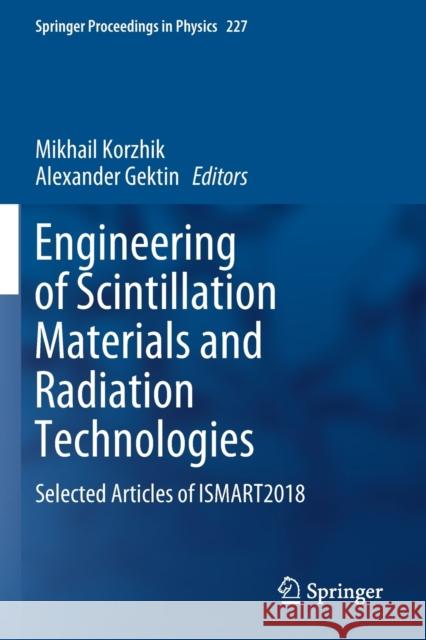Engineering of Scintillation Materials and Radiation Technologies: Selected Articles of Ismart2018 » książka
topmenu
Engineering of Scintillation Materials and Radiation Technologies: Selected Articles of Ismart2018
ISBN-13: 9783030219727 / Angielski / Miękka / 2020 / 326 str.
Engineering of Scintillation Materials and Radiation Technologies: Selected Articles of Ismart2018
ISBN-13: 9783030219727 / Angielski / Miękka / 2020 / 326 str.
cena 682,72
(netto: 650,21 VAT: 5%)
Najniższa cena z 30 dni: 655,41
(netto: 650,21 VAT: 5%)
Najniższa cena z 30 dni: 655,41
Termin realizacji zamówienia:
ok. 22 dni roboczych
Dostawa w 2026 r.
ok. 22 dni roboczych
Dostawa w 2026 r.
Darmowa dostawa!
This proceedings book presents dual approaches to examining new theoretical models and their applicability in the search for new scintillation materials and, ultimately, the development of industrial technologies. The ISMART conferences bring together the radiation detector community, from fundamental research scientists to applied physics experts, engineers, and experts on the implementation of advanced solutions. This scientific forum builds a bridge between the different parts of the community and is the basis for multidisciplinary, cooperative research and development efforts. The main goals of the conference series are to review the latest results in scintillator development, from theory to applications, and to arrive at a deeper understanding of fundamental processes, as well as to discover components for the production of new generations of scintillation materials.
The book highlights recent findings and hypotheses, key advances, as well as exotic detector designs and solutions, and includes papers on the microtheory of scintillation and the initial phase of luminescence development, applications of the various materials, as well as the development and characterization of ionizing radiation detection equipment. It also touches on the increased demand for cryogenic scintillators, the renaissance of garnet materials for scintillator applications, nano-structuring in scintillator development, trends in and applications for security, and exploration of hydrocarbons and ecological monitoring.











